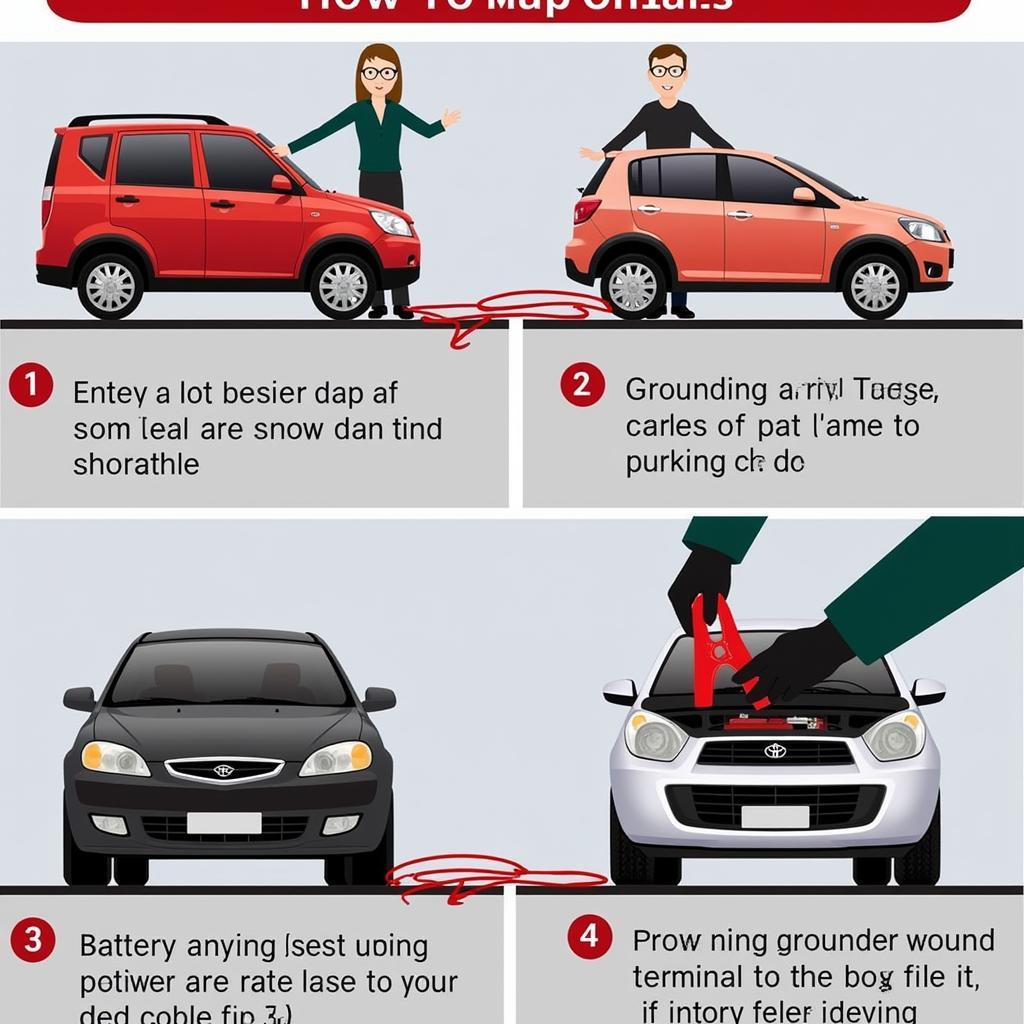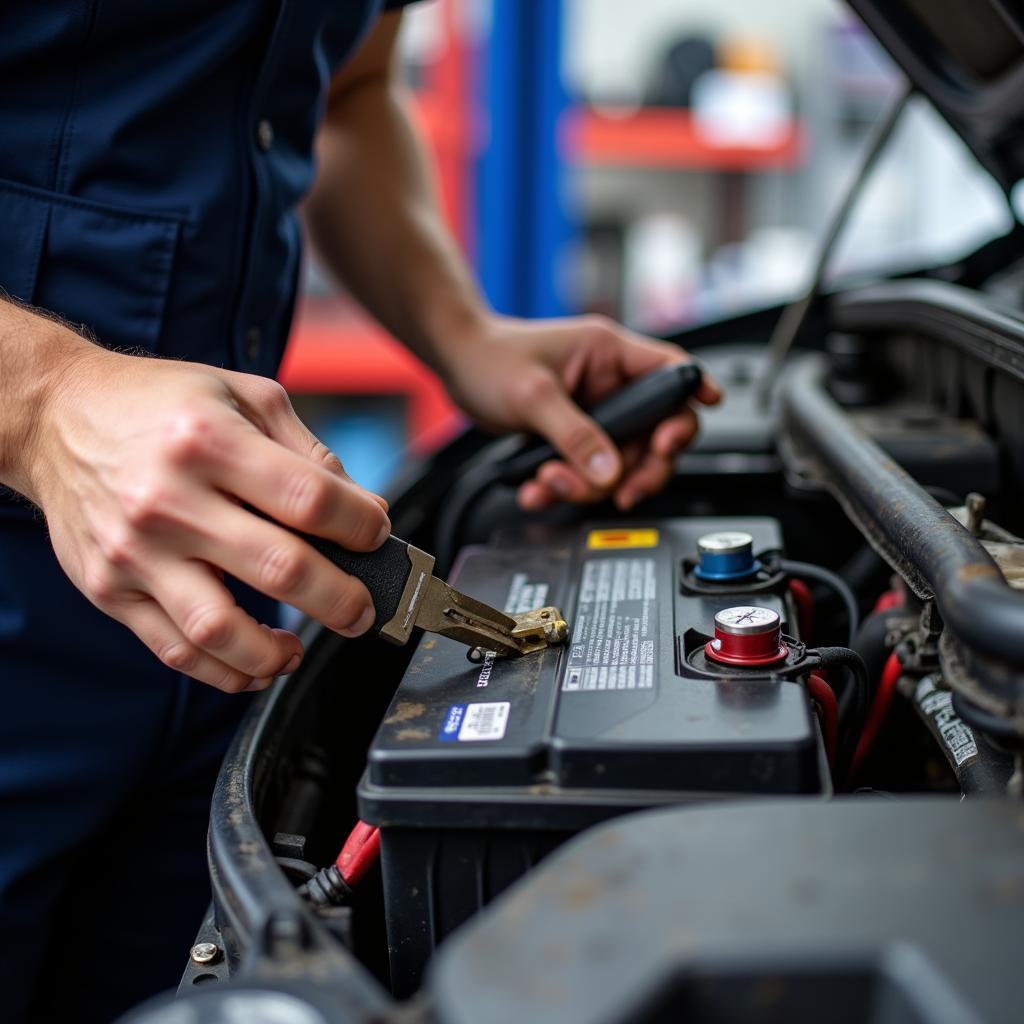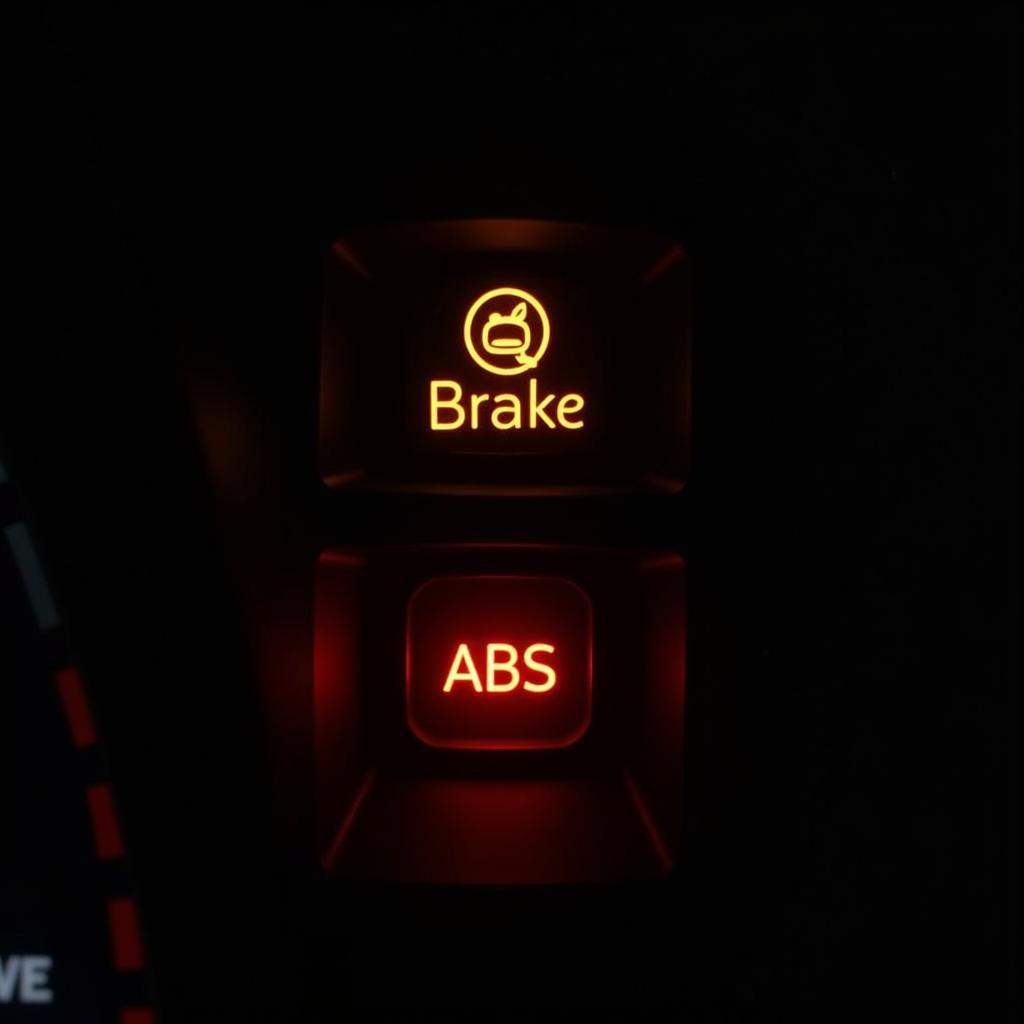A dead battery is the most common reason a car won’t start. This comprehensive guide tackles the “battery flat car won’t start” problem, providing solutions for diagnosing, jump-starting, and preventing future occurrences. We’ll explore various aspects, from identifying the symptoms to understanding the underlying causes and offering practical solutions.
If your car battery is completely drained, attempting to start the car will only result in a clicking sound, dim headlights, or no response at all. This can be incredibly frustrating, especially if you’re in a hurry. Don’t worry, though, as there are several ways to get your car running again. Let’s dive into the potential reasons behind a flat car battery.
Why is My Car Battery Flat?
Several factors can contribute to a flat battery. Leaving lights on overnight is a classic culprit. Other potential causes include faulty alternators, parasitic drains (electrical components drawing power even when the car is off), extreme temperatures, and simply an old battery that’s reached the end of its lifespan. Identifying the root cause is crucial for a long-term fix.
One easy way to check for a parasitic drain is to disconnect the negative battery terminal and connect a multimeter in series between the terminal and the cable. A reading above 50 milliamps usually indicates a drain that needs further investigation. You might consider checking related resources like this guide on fob key battery issues, as sometimes even key fobs can contribute to battery drain, albeit rarely.
How to Jump Start a Car with a Flat Battery
Jump-starting a car is a temporary solution that can get you back on the road. You’ll need another vehicle with a working battery and jumper cables. First, connect the positive (red) cable to the positive terminal of the dead battery. Then, connect the other end of the red cable to the positive terminal of the good battery. Next, connect the negative (black) cable to the negative terminal of the good battery, and finally, connect the other end of the black cable to a metal ground on the car with the dead battery, away from the battery itself. Start the working car, let it run for a few minutes, then try starting your car. Once started, let your car run for at least 30 minutes to recharge the battery.
Safety Precautions When Jump Starting
Always take necessary safety precautions when jump-starting a car. Wear safety glasses and gloves. Ensure the vehicles aren’t touching. Be mindful of moving parts and hot surfaces. Incorrectly connecting the cables can cause sparks, damage the electrical systems, or even cause the battery to explode. If you are unsure about the process, it is best to seek assistance from a qualified mechanic. For some car models, specific procedures must be followed when jump-starting, like consulting resources such as the one available for Lexus RX 350 key fob battery replacement.
 Jump Starting a Car Safely
Jump Starting a Car Safely
Preventing a Flat Car Battery
Preventing a flat battery is easier than dealing with the consequences. Regularly check your battery’s health, ensure all lights and accessories are off when the car is parked, and limit short trips, as these don’t give the alternator enough time to fully recharge the battery. Extreme temperatures can also affect battery performance. You can also explore preventative measures for specific car models, like addressing the Seat Leon key battery warning to minimize potential drains.
What if your car still won’t start after a jump? This could indicate a more serious issue, such as a faulty starter, alternator, or a problem with the car’s electrical system. Consulting a professional mechanic is recommended in this situation. Another helpful resource you might want to look at is how to change your Mazda 6 key fob battery, as sometimes a faulty key fob can also indirectly affect the car’s starting capability.
 Car Battery Maintenance Tips
Car Battery Maintenance Tips
Conclusion
Dealing with a “battery flat car won’t start” situation can be a hassle, but understanding the causes, knowing how to jump-start a car safely, and taking preventative measures can help avoid future occurrences. Regular maintenance and prompt attention to warning signs can significantly extend your car battery’s lifespan and keep your car running smoothly. Don’t let a flat battery leave you stranded; be proactive and stay prepared. A similar approach can be applied to your key fob batteries as well, like replacing a 2014 Ford Escape key fob battery preemptively.
FAQ
- How long does it take to jump-start a car? Typically, a few minutes of charging from another vehicle is enough to start the engine.
- How can I tell if my car battery is dying? Signs include slow engine cranking, dim headlights, and clicking sounds when trying to start.
- How often should I replace my car battery? On average, car batteries last between 3 and 5 years.
- Can I jump-start my car with any other car? Yes, as long as the other car has a compatible 12-volt battery.
- What should I do if my car won’t start after a jump? Consult a mechanic, as it may indicate a problem beyond the battery.
- How can I prevent my car battery from draining overnight? Ensure all lights and accessories are off, and check for parasitic drains.
- How can extreme temperatures affect my car battery? Extreme heat and cold can shorten a battery’s lifespan and affect its performance.

